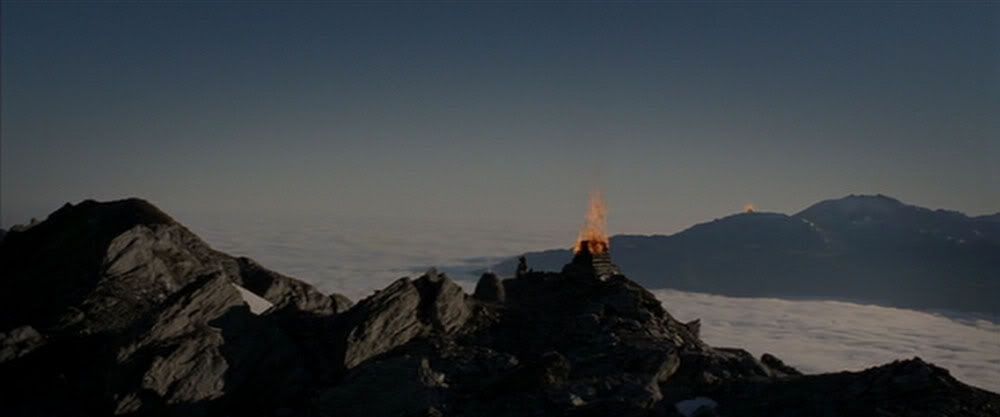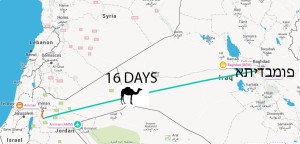Beitzah 5b.
1- Interesting Gemara giving one a glimpse into the life of Jews outside Eretz Yisroel after the Churban prior to the establishment and acceptance of a universal ‘Luach’ – calendar.
Here are the dates of our topic:
The calendar was established approximately(according to most opinions) in the year 4100 .
Our Gemara refers to an argument that occurred in Bavel 100 years or so before the acceptance of the calendar when it was common to observe two days of Yom Tov.
Living in Bavel meant that on a typical Rosh Chodesh one was unaware as to what day was established as Rosh Chodesh in Eretz Yisroel. Was it on the 30th day of the previous month or the 31st? Thus all observed two days of Yom Tov.

Remember the key: Historically all who lived far away from Yerusholayim observed two days of Yom Tov. Just as we, today, observe two day despite us following the calendar.

The question is if these two days were originally observed because it was so enacted by the Beis Din (Takana) to keep two days (as one) or it was rather an ad-hoc Minhag by default due to the uncertainty (safek) of when Rosh Chodesh was established in Yerusholayim.
Is there a practical difference? Yes!
For example, if prior to the Luach being established, a town had astronomers with the knowledge to mathematically calculate when the new moon could be seen and therefore conclude when the Beis Din in Yerushalayim ‘sanctified’ Rosh Chodesh.

This particular town still needed to keep two days Yom Tov of course. But the second day was really a non Yom Tov according to their calculation and therefore Havdala needed to be made at the end of day one!

Here is the logic:
If the two-day-Yom-Tov was a Takana by Beis Din then such calculations are cast aside. Regardless of the mathematics one must keep two days with no Havdala between them. More so – both days are considered as one long Yom Tov day.
On the other hand if the reason a two-day-Yom-Tov was practiced was only because that is what frum people do when in doubt (safek) ….. they go lechumra [without an edict from Beis Din] and in order to be certain that Matzah is eaten on Pesach proper they ate Matzah on both of the two days…

– so if Beis Din never ruled to keep two days, if they are not in doubt, such as an occurrence of a definitive calculation, the two-day-Yom-Tov practice is redundant and one day is kept as real Yom Tov and the second just observed as Yom Tov and as a consequence Havdala must to be made between the two days.
2- Reb Zeira offers proof to the opinion that all Jews in exile keep two day as a result of a non reversible Takana.
The fact is that today that we have an established calendar and thus we all are ‘groise chachomin’ and accomplished astronomers…. as to when Rosh Chodesh is.

So why do we keep two days? Obviously it is because a strict two day Yom Tov Takana was enacted [way back in history when Jews moved away from Yerusholayim to a distance of more than 15 days of travel] and cannot be changed even when we accepted to follow the mathematical calendar.
Therefore even before the establishment of the calendar one must keep two days (as one) as part of the Takana even if one knows when the real Rosh Chodesh is.
3- Abaye on the other hand brings proof from a Mishna, RH 2,1, that it was never a Takona. Two days were kept only as a sofek.
Originally [they had no need to send out messengers to inform the people of the new moon, rather,] they used to light a series of torches [which, when sighted, was a sign of the new moon] but when the heretics [Kusim] perverted [justice and tried to mislead the people by lighting their own torches] they enacted that messengers should go forth [to announce the new moon].

Had the Kusim stopped causing this problem and the torches would be seen all the way into Bovel then it would have reverted back to keeping only one day. This is proof that there never was a Takana two keep two days. It was only kept as a sofek.

If, according to Abaye, no Takana was ever enacted, and it all was because of a sofek which can be reversed once the situation changes, so why today, when we follow the calendar do we keep two days?
The Gemore explains that it is because ‘Minhag Avoiseihem’ for a reason that we will learn next week.
4- We mentioned two Seforim that were written as an encyclopedia enumerating what Mitzvah is min Hatorah or mid’Derabonon.
Here they are:
http://beta.hebrewbooks.org/41926
http://beta.hebrewbooks.org/31452
